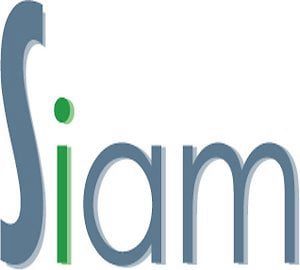When should you update or revise your safety data sheets (SDS)?

Photo by rawpixel.com from PxHere
Understanding legal requirements in countries that have adopted GHS
Introduction
- Chemical suppliers must periodically review and update their SDSs to include new hazard information, protective measures, or changes to product information.
- In this post, we summarize the regulatory requirements for SDS revisions in some of the major countries that have adopted the Globally Harmonized System of Classification and Labeling of Chemicals (GHS).
Timing of review
As a chemical supplier, it is your responsibility to ensure that your Safety Data Sheets (SDS) are accurate and up-to-date. Revisions may be necessary due to new hazard statements, new protective measures, or changes in product information. But when exactly should you review your SDS?
Countries involved
In this article, we summarize the regulatory requirements for SDS revisions in the major countries that have adopted the Globally Harmonized System of Classification and Labeling of Chemicals (GHS). These countries are the European Union (EU), the United States (US), Canada, China, Japan, Korea, Taiwan, Singapore, and Australia.
Europe
Article 31 of REACH requires that safety data sheets be updated without delay when new hazard information or risk management measures become available, when a REACH authorization or restriction is imposed, and after registration.
The revised safety data sheet must be made available to all previous and new recipients of the substance within 12 months. A sequential numbering system is proposed to identify new versions.
Minor changes can be indicated by updating the decimal number, while major changes require a change in the non-decimal number.
REACH does not require periodic SDS evaluations.
USA
The MSDS should be reviewed and updated in the following situations:
- new important information has been found on a hazardous chemical for which a MSDS has been submitted. In this case, OSHA regulations require that the MSDS be reviewed within three months of the new information becoming known and then submitted to the appropriate authorities.
- the hazard classification of a hazardous chemical changes based on OSHA HCS revisions to incorporate the GHS criteria.
If you receive an amended MSDS in the new standardized format, but the hazard classification has not changed. Then you should check with your state about submitting an amended MSDS, as each state may have specific requirements for submitting information under EPCRA.
Canada
The MSDS must be updated or revised if the supplier becomes aware of “significant new data” that changes the hazard classification or ways to protect against the hazards of the product. The MSDS must be updated within 90 days of the supplier becoming aware of the new information. This requirement applies in Alberta, Manitoba, New Brunswick, Ontario, Prince Edward Island and Quebec.
The employer’s responsibility to update or obtain the MSDS in the workplace is governed by the jurisdiction. In the federal workplace, the WHMIS Act requires the employer to actively seek an updated MSDS every three years.
If the employer becomes aware of important new data, it must include that data in the existing VIB. However, it is important to note that the requirement for suppliers to update safety data sheets every three years – as was the case under WHMIS 1988 – is no longer required under the current regulations. Therefore, the safety data sheet must be accurate at the time of each sale or import of the hazardous product.
What is WHMIS 2015?
The Workplace Hazardous Materials Information System (WHMIS 2015) is the Canadian adaptation of the GHS and is contained in the Hazardous Products Regulations HPR (SOR/2015-17), as amended by SOR/2020-38 and SOR/2022-272. It is a complete system that provides information on the health and safety of hazardous products intended for use, handling or storage in Canadian workplaces.
The Workplace Hazardous Materials Information System (WHMIS 2015) governs the content of safety data sheets under Part 4 and Schedule 1 of the Hazardous Products Regulations HPR (SOR/2015-17, SOR/2020-38, SOR/2022-272.) ) and also the contents of labels in accordance with Part 3 of the Hazardous Products Regulations HPR (SOR/2015-17, SOR/2020-38, SOR/2022-272).
The Workplace Hazardous Materials Information System (WHMIS 2015) is aligned with the seventh revised edition of the Globally Harmonized System (GHS) and also includes certain provisions that align portions of the HPR with the 8th revision of the GHS Purple Book. However, it does not implement the entire system, as the WHMIS excludes hazard categories from the Purple Book and includes amendments.
China
Chinese standards GB/T 16483-2008 and GB/T 17519-2013 require suppliers to maintain accurate information in Material Safety Data Sheets (MSDS). In addition, the Workplace Rules for Chemical Safety (1997) require manufacturers to review MSDSs every five years or whenever new hazard information becomes available and distribute updated versions to recipients within six months.
Japan
As of April 1, 2023, it is mandatory to assess health risks every five years. If updates occur, the safety data sheet must be reviewed and sent to downstream recipients within one year.
Taiwan
In Taiwan, a company that manufactures or imports toxic and related chemicals must periodically review, correct and update the contents of the safety data sheets. The assessment process should be reviewed at least every three years. In addition, information on update contents, date and version, etc., must be kept for future reference for three years. Therefore, distributors in Taiwan must update their MSDS information at least every three years.
Singapore
The Material Safety Data Sheet (MSDS) must be revised:
- within 5 years from the date of issue.
- when there is new information or a change in the properties of a chemical.
Australia
Manufacturers and importers of hazardous chemicals must review and update the information in a MSDS every 5 years.
Each MSDS must show the date of the last review and update. This date is usually indicated in “Section 16 – Any other relevant information” of the safety data sheet.
Also Read: Highlights from the June BPC meeting
Reservation
This information has been compiled with the greatest possible care, in some cases from different information sources. (Interpretation) errors are not excluded. No legal obligation can therefore be derived from this text. Everyone dealing with this subject has the responsibility to delve into the matter!
